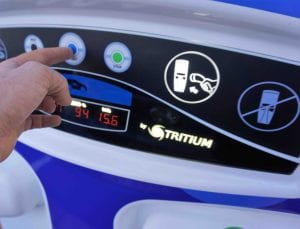The first thing that strikes you about the new Hyundai Ioniq electric vehicle range is how normal they look.
Unlike Tesla, or even the Toyota Prius if you go back a decade, there is no attempt to make this electric vehicle look any different from, or any more virtuous than, an internal combustion engine car.
And that is a deliberate move by the manufacturer. If Tesla’s goal was to take the electric vehicle away from the golf course to a “high end” and high performance vehicle, Hyundai’s goal is to make electric the new normal.
“We don’t want our cars to look like an experiment,” says Scott Nargar, the company’s head of future mobility.
The company wants its new electric range to become a normal choice, and to encourage that it is releasing the Ioniq car in three versions – hybrid, plug in hybrid and full battery electric.
The only way to tell the difference at quick glance is that the full electric Ioniq does not have a grill.
Nargar says the range is to allow for the varying budgets, and comfort zones of their customers. Not everyone wants to go full battery electric. But the data suggests that most do .
Hyundai’s experience overseas so far is that the sales have gone about 50 per cent full electric, 30 per cent plug in, and 20 per cent hybrid.
It expects a similar reaction in Australia, but I suspect the full battery electric will do better. And that’s where our interest lies. Besides, it’s the most fun.
 The pricing – about $A45,000 for the full electric , plus on road costs – means that the Ioniq the first full electric with a decent range (in this caae 280kms) to break the $A50,000 mark. That doesn’t quite get us to the mass-market, but it is getting there.
The pricing – about $A45,000 for the full electric , plus on road costs – means that the Ioniq the first full electric with a decent range (in this caae 280kms) to break the $A50,000 mark. That doesn’t quite get us to the mass-market, but it is getting there.
Read the full story on RenewEconomy’s electric vehicle-dedicated site, The Driven…
You can also sign up to The Driven’s regular, and free, newsletter here.









